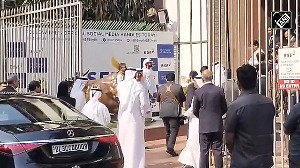Tyre stocks have been on a tear over the past six months, with average returns exceeding 45 per cent. Except for Apollo Tyres, which has seen a slight correction in the last month and a half, limiting its gains to 16 per cent, listed peers such as MRF, CEAT Tyres (formerly Cavi Elettrici e Affini Torino), and JK Tyre & Industries have delivered returns exceeding 30 per cent during this period.

Production-related constraints and sluggish demand in Europe, where sales are expected to remain flat, coupled with high valuations, have contributed to Apollo Tyres’ underperformance.
The tyre sector’s gains can be attributed to robust growth trends driven by the replacement market, which constitutes more than two-thirds of sales.
According to IIFL Research, industry revenue has increased by 20 per cent over the past two years.
While 10 per cent of this growth is due to increased volumes compared to the low base during the Covid-19 pandemic, the rest results from a significant rise in realisations.
Realisations have remained stagnant over the past decade, according to the brokerage.
CRISIL Ratings anticipates that Indian tyre makers’ production volume growth will reach 6-8 per cent year-on-year (Y-o-Y), reaching a new high of 2.7 million tonnes in 2023-24 (FY24).
This growth is expected to be primarily driven by increased replacement sales and consistent demand from commercial vehicles (CVs) and passenger vehicles (PVs).
While production volume growth will be slower than the 14 per cent and 11 per cent seen in 2021-22 and 2022-23, respectively, it will still exceed the decadal average of 4 per cent.
The rating firm attributes this to a rising preference for personal mobility and a recovery in CV volumes following the pandemic.
Poonam Upadhyay, director at CRISIL Ratings, says, “We anticipate 7-9 per cent growth in replacement demand in the current financial year (FY24), primarily from the CV segment.
"This is driven by ongoing investments in infrastructure and increased bus fleet utilisation, with more people returning to work after the pandemic.
"Replacement demand will also gain momentum from the high on-road stock of PVs and two-wheelers.”
The primary driver of this rally has been improved margins.
Benefiting from lower raw material costs, gross margins expanded by 360-940 basis points (bps) Y-o-Y in the April-June quarter (first quarter, or Q1).
These margins reached multi-quarter highs and followed a 750–800-bp expansion in the January-March quarter compared to the July-September quarter of the previous year, as noted by IIFL Research.
Operating profit per tonne also reached multi-year highs.
However, with crude oil prices approaching the $100 per barrel mark and natural rubber prices inching upward, margins are expected to come under pressure.
In a report earlier this month, Rishi Vora and Praveen Poreddy of Kotak Institutional Equities observed, “The recent upswing in international natural rubber and crude oil prices will weigh on the profitability of tyre companies in the coming quarters.
"Our analysis suggests a gross margin decline of 300–400 bps for tyre companies (CEAT, MRF, and Apollo) from Q1FY24 levels over the coming quarters if commodity prices were to sustain at current levels.”
Crude oil derivatives account for half of the raw material costs, with natural resources comprising the other half.
According to the brokerage, if tyre companies do not implement price increases, there is a 10–30 per cent downside risk to their 2024-25 earnings per share estimates at current spot prices.
Considering the multiple headwinds facing tyre companies and valuations trading above their long-term averages, the risk/reward ratio appears unfavourable.
Investors are advised to await clear trends in both demand and margins before considering these stocks.
Disclaimer: This article is meant for information purposes only. This article and information do not constitute a distribution, an endorsement, an investment advice, an offer to buy or sell or the solicitation of an offer to buy or sell any securities/schemes or any other financial products/investment products mentioned in this article to influence the opinion or behaviour of the investors/recipients.
Any use of the information/any investment and investment related decisions of the investors/recipients are at their sole discretion and risk. Any advice herein is made on a general basis and does not take into account the specific investment objectives of the specific person or group of persons. Opinions expressed herein are subject to change without notice.












 © 2025
© 2025